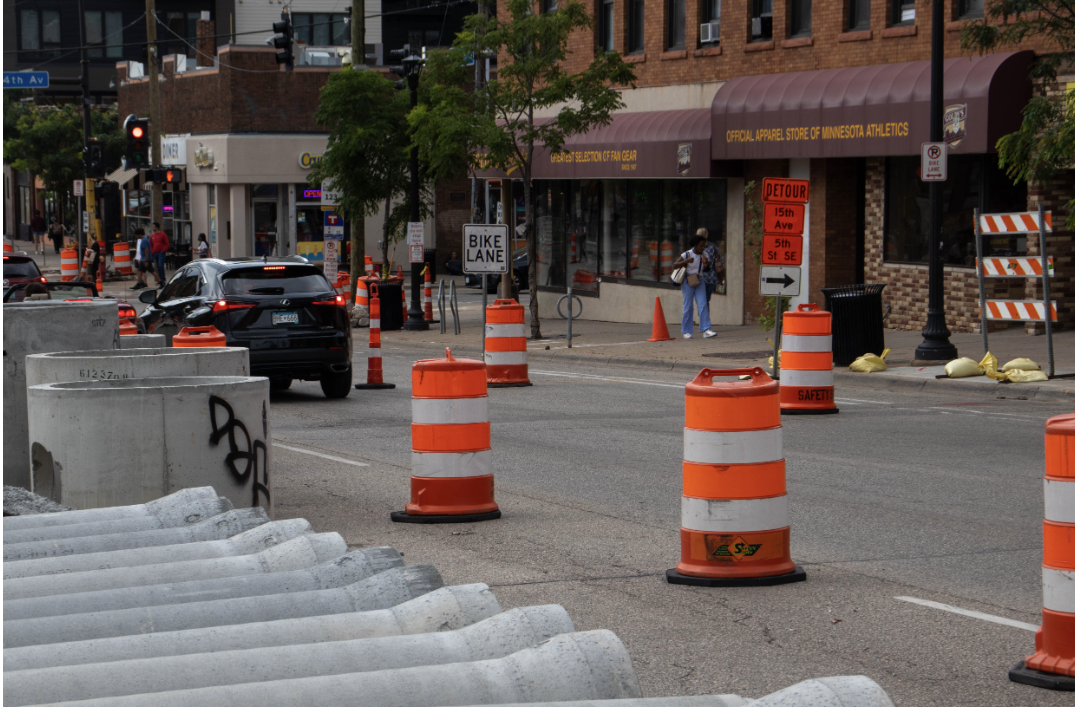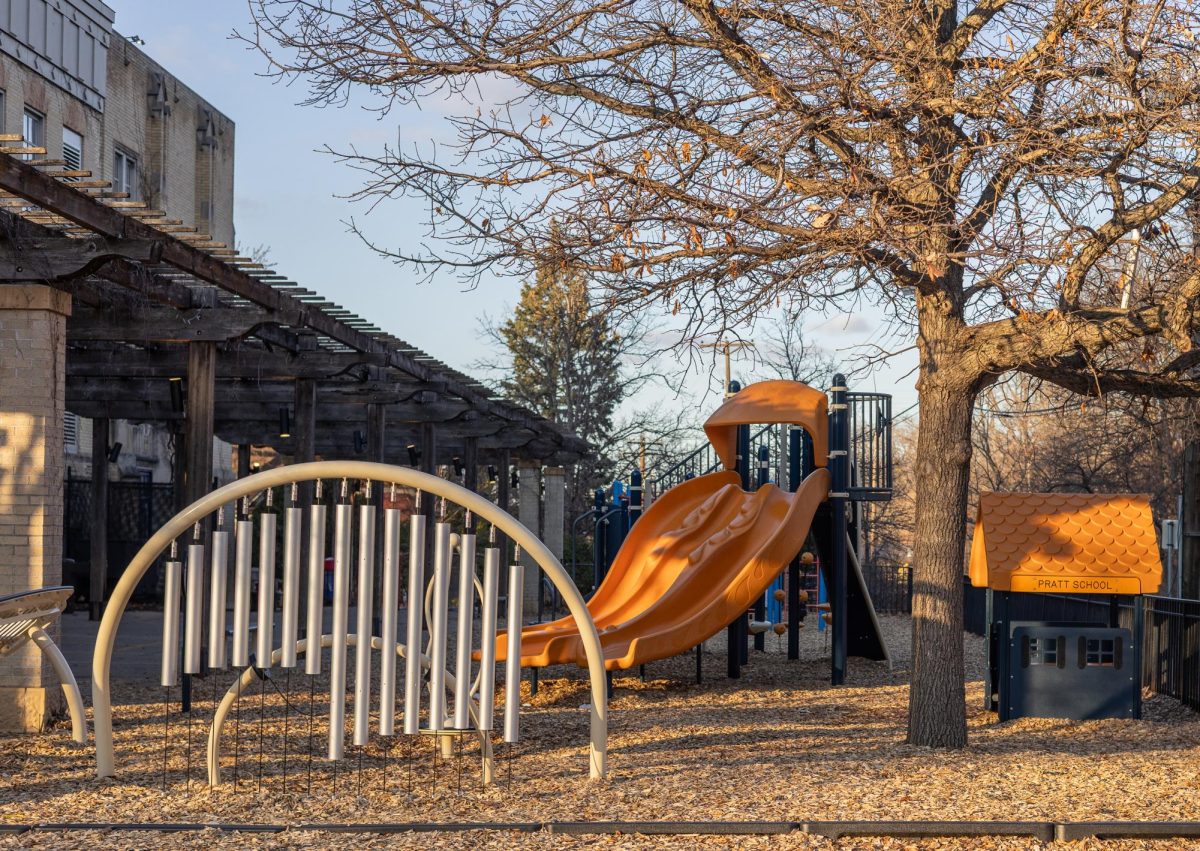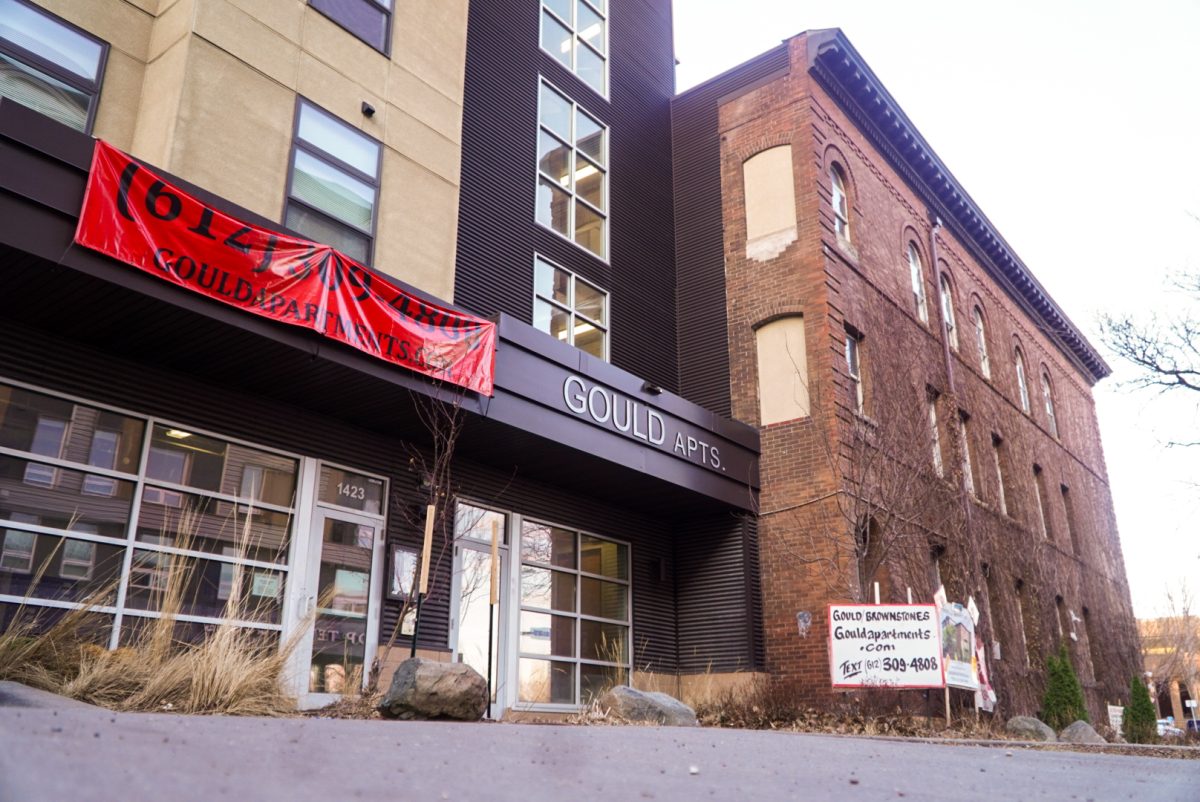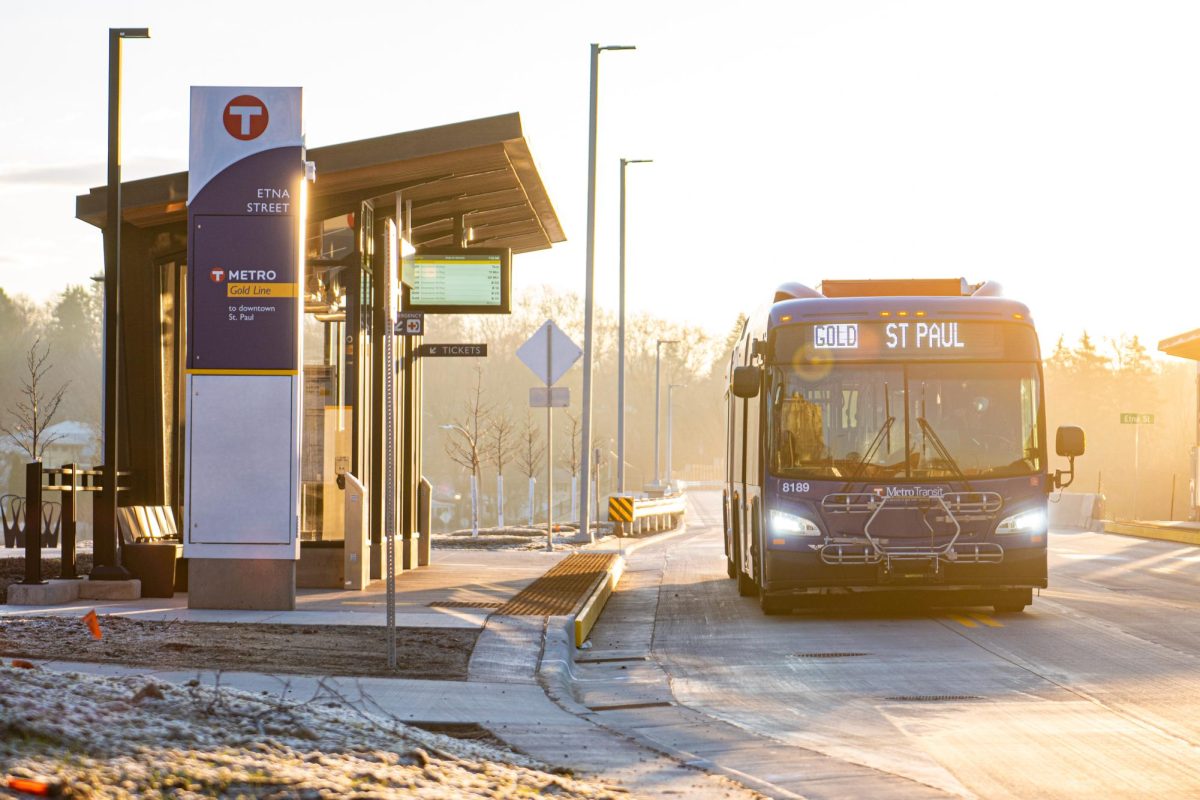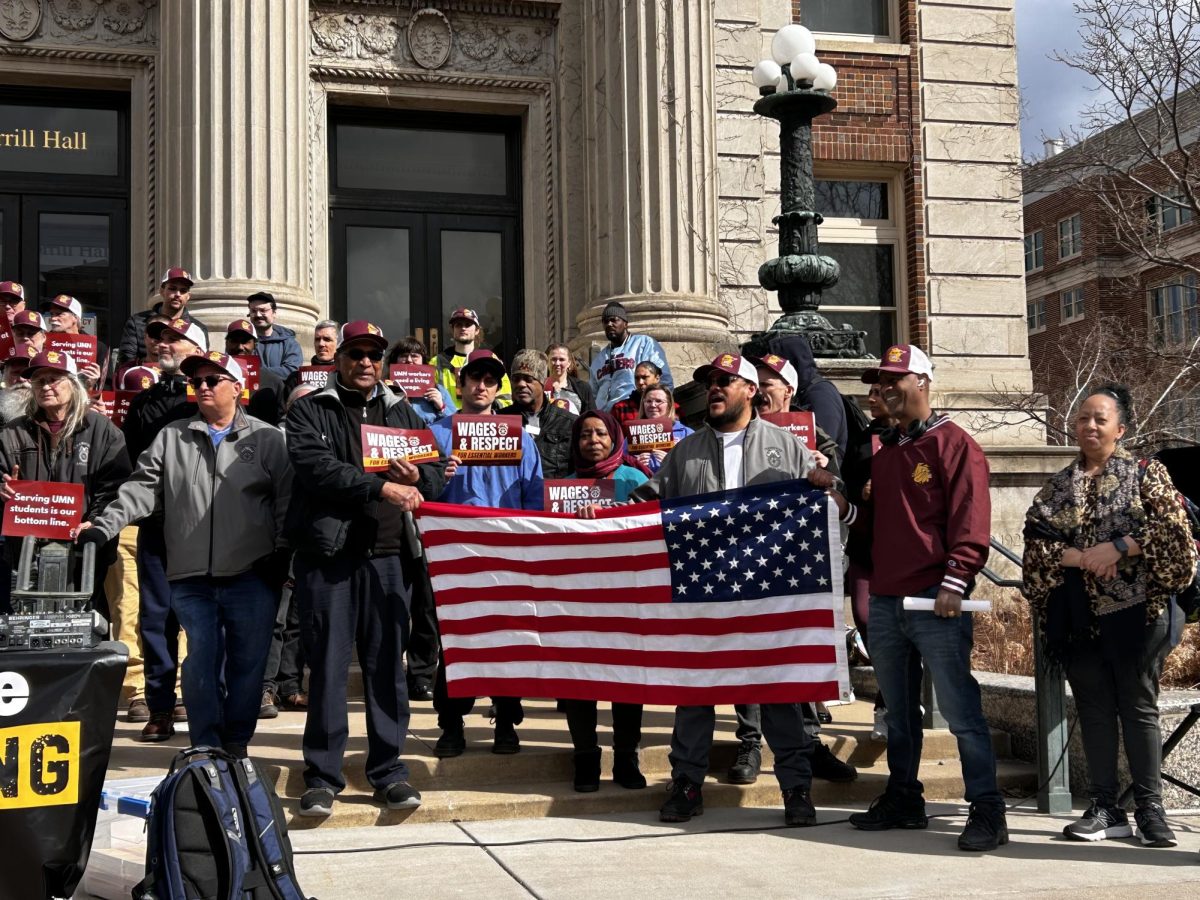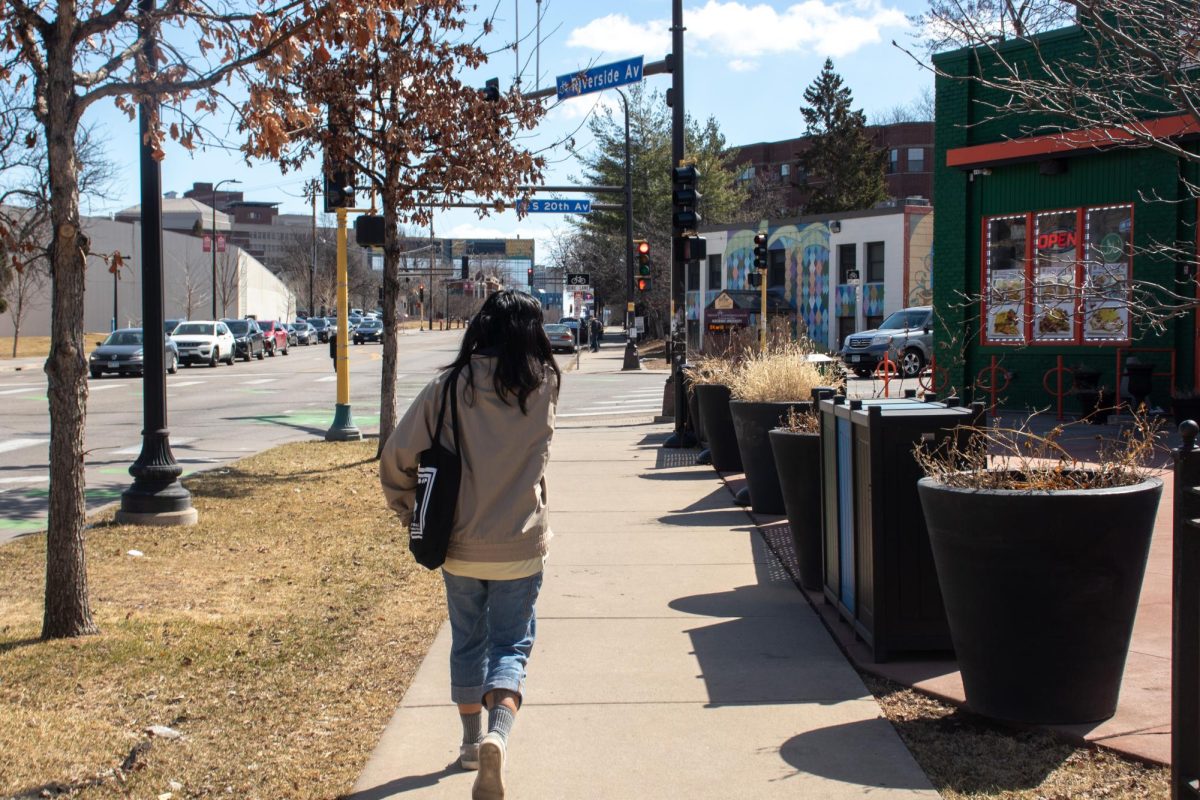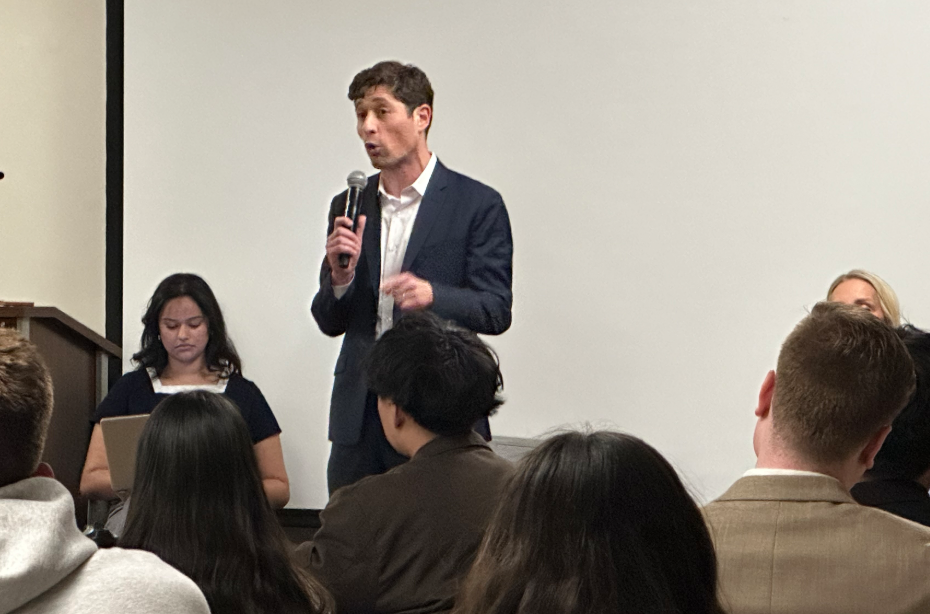The City of Minneapolis is looking to add traffic calming measures to many city streets to slow traffic speeds and improve public safety through its neighborhood traffic calming program.
Minneapolis will have an estimated backlog of 850 traffic calming construction requests from residents throughout the city by the start of 2025. Fulfilling all of the requests by 2025 would cost the city $15 million and $7 million annually from 2025 to 2028 to keep up on requests, according to Minneapolis Public Works.
Traffic calming is generally a physical change to the road designed to slow cars down and thus make the street safer, said Ben Brasser, the principal professional engineer for Minneapolis.
Traffic calming requests come from the neighborhood traffic calming program, where the public can submit an online application for a street they want to see slower car speeds on, Brasser said. Traffic calming measures include speed humps, small traffic circles, curb extensions and mid-block median islands.
“In the first two years of the program, there were over 700 requests that came in,” Brasser said.
The program is only concerned with neighborhood streets, Brasser said. Streets owned by the county or state are not considered for the program.
According to Brasser Minneapolis Public Works will continue with city funding, and the city is looking to “strike a balance” between implementing the full design treatments and other, less costly options.
“We’re trying to make the program go as far as possible, but it is still the reality that the number of requests out-pace the resources that are currently allocated to the program,” Brasser said.
The most important factor in traffic injuries and deaths is vehicle speed, according to Minneapolis safety data. The traffic calming project is part of a larger mission to eliminate all traffic injuries and deaths called Vision Zero.
Executive Director of Our Streets Minneapolis José Antonio Zayas Cabán said the organization supports the city’s implementation of traffic calming measures because they improve safety for drivers and pedestrians alike.
But Zayas Cabán said the city needs to seriously “ramp up” funding for traffic calming if they want to achieve the Vision Zero goal by 2027.
“With these traffic calming requests going almost 100% unfunded, we feel Minneapolis is really far away,” Zayas Cabán said.
Brasser said the neighborhood traffic calming program and Vision Zero are separately funded programs but share the same broad goal.
“Our Vision Zero efforts focus on a network of high-injury streets,” Brasser said. “The neighborhood traffic calming is a separate network of streets.”
Zayas Cabán said it is also important the city engages and listens to the community’s requests so changes are made in collaboration with the public, rather than changes being imposed on them.
“We think it’s really important to be designing and implementing these traffic calming measures in partnership with communities to make sure that it meets their expectations and needs,” Zayas Cabán said.
Additionally, many communities of color and immigrant neighborhoods have some of the most dangerous and car-centric streets in the city, according to Zayas Cabán.
“We feel, as an organization, that disproportionate impact means that those communities should be prioritized in terms of funding and investment before wealthier, whiter neighborhoods,” Zayas Cabán said.
The city is also beginning a traffic speed camera program in 2025, designed to discourage speeding by capturing a picture of the license plate on a speeding car and sending the owner a ticket via mail.
Zayas Cabán said Our Streets Minneapolis supports design changes over traffic enforcement.
“They naturally lead to basically re-enforcing racial disparities,” Zayas Cabán said. “We believe that investments should be made in communities. We shouldn’t be penalizing people for the outcomes of poor design.”


